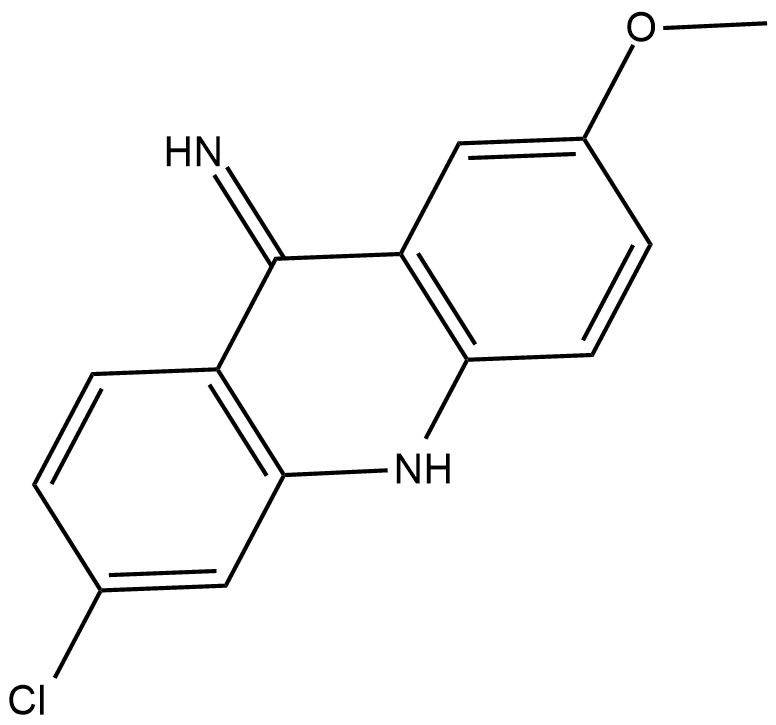9-Amino-6-chloro-2-methoxyacridine (Synonyms: ACMA) |
| Katalog-Nr.GC18326 |
9-Amino-6-chlor-2-methoxyacridin ist eine pH-empfindliche Fluoreszenzsonde.
Products are for research use only. Not for human use. We do not sell to patients.

Cas No.: 3548/9/2
Sample solution is provided at 25 µL, 10mM.
9-Amino-6-chloro-2-methoxyacridine (ACMA) is a cell-permeable fluorescent probe that intercalates into DNA.[1] It selectively binds to poly(dA-dT) sequences with the fluorescence lifetime decreasing with incorporation of guanosine. It is used for labeling DNA and displays excitation/emission spectra of 411/475 nm, respectively.[2] ACMA fluorescence is pH-dependent and is quenched when a pH gradient is established, a property that has been utilized in animal- and plant-based studies.[3],[4],[5] It also inhibits acetylcholinesterase with a Ki value of 49 nM.[6]
Reference:
[1]. Fukui, K., Tanaka, K., Fujitsuka, M., et al. Distance dpendence of electron transfer in acridine-intercalated DNA. J. Photochem. Photobiol. B Biol. 50, 18-27 (1999).
[2]. Härd, T., Fan, P., Magde, D., et al. On the flexibility of DNA: Time-resolved fluorescence polarization of intercalated quinacrine and 9-amino-6-chloro-2-methoxyacridine. J. Phys. Chem. 93, 4338-43458 (1989).
[3]. Baracca, A., Bucchi, L., Ghelli, A., et al. Protonophoric activity of NADH coenzyme Q reductase and ATP synthase in coupled submitochondrial particles from horse platelets. Biochem. Biophys. Res. Commun. 235(3), 469-473 (1997).
[4]. Uzdavinys, P., Coinçon, M., Nji, E., et al. Dissecting the proton transport pathway in electrogenic Na+/H+ antiporters. Proc. Natl. Acad. Sci. U.S.A. 114(7), E1101-E1110 (2017).
[5]. Carqueijeiro, I., Martins, V., Noronha, H., et al. Analytical and fluorimetric methods for the characterization of the transmembrane transport of specialized metabolites in plants. Methods Mol. Biol. 1405, 121-135 (2016).
[6]. Bencharit, S., Morton, C.L., Hyatt, J.L., et al. Crystal structure of human carboxylesterase 1 complexed with the Alzheimer’s drug tacrine: From binding promiscuity to selective inhibition. Chem. Biol. 10(4), 341-349 (2003).
Average Rating: 5 (Based on Reviews and 28 reference(s) in Google Scholar.)
GLPBIO products are for RESEARCH USE ONLY. Please make sure your review or question is research based.
Required fields are marked with *




















